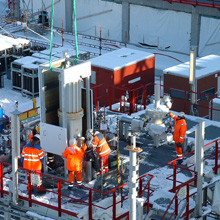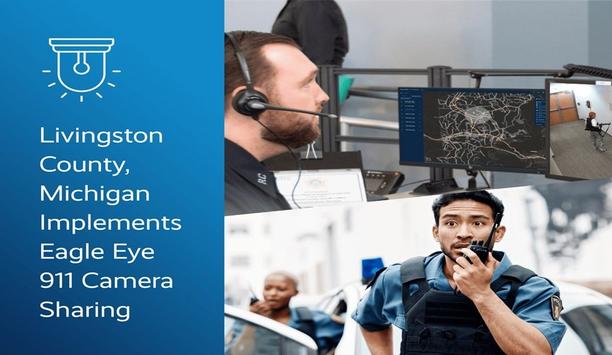 |
| BAE Systems, QinetiQ, TPS and various other companies alongwith University of Nottingham have formed LiMBS |
BAE Systems, QinetiQ, AIGIS Blast Protection, TPS, Permali Gloucester Ltd, MIRA, Sigmatex and the University of Nottingham have formed LiMBS (Lightweight Material & Structures for Blast and Ballistic Survivability).
Co-funded by the government-backed Technology Strategy Board, LiMBS aims to develop enhanced lightweight cost effective multi-layer/ multi-material structures to resist shock, pressure impulse and impacts associated with both land mines and free air explosives events, and to mitigate the effects when a structure is overmatched by reducing the spread of spall fragment projectiles passing through the structure.
A material of this type could have potential commercial benefits across a number of sectors, including: defence, aerospace, oil and gas, automotive, heavy industrial, high security environments, personal security / VIP protection, and for security product manufacturers.
The programme intends to develop new materials that are lighter than rolled homogeneous armour which is typically used for the construction of fighting or armoured vehicles. Lighter materials could be used to manufacture and assemble armour protected vehicles to resist the effects of explosions such as land mines and improvised explosive devices; these are the current weapons of choice for disabling fighting vehicles in theatres such as Afghanistan. Lighter vehicles would be more readily deployable, particularly when using air transport and thus achieving enhanced performances for future military systems.
The composite material, or a similar hybrid, could be adapted for use in a health and safety function for explosive manufacture, storage and transportation. The oil and gas sector could offer a potential market due to the intrinsic requirements of blast protection on their sites both on and off shore.
Furthermore, a primary objective is to exploit the technology in civilian applications such as physical protection for high value assets.
“This project is potentially groundbreaking for industry, as the new material will be lighter than normal Armour Steel and therefore all the structures (vehicles and not) built with this material will be easier to transport and deploy all over the world, using more efficient transport, consuming less fuel, less CO2,” says Alan Watson of BAE Systems.
The research objectives are to develop materials that:
- Have an areal density significantly less than Rolled Homogeneous Armour (RHA).
- Offer similar blast and ballistic protection to RHA.
- Are capable of cost effective manufacture, assembly and repairs.
- When overmatched, reduce spall fragment spread.
- Are suitable for new build and retrofit.
In addition to the above, a key objective is to evaluate material properties to facilitate cost effective reliable modelling using dynamic finite element analysis and minimise the need for expensive live testing.
“The solution will be based on a back-bone of fibre composite materials to provide the lightweight structural requirement, augmented with tailored interlayers consisting of shock dissipation, energy absorption and high failure strain materials,” explains founder member of LiMBS and Consulting Engineer at TPS, Simone Volpe.
Previous studies have shown that blast resistance of composite materials can exceed that of RHA by judicial deployment of multi-layer, multi-material combinations. After careful consideration a wide selection of constituent materials have been selected for evaluation, including Armox 370T® (as a baseline), aluminium, carbon fibre, glass fibre, aramid and Tabreshield.
Materials such as the carbon fibre, glass fibre and aramid refer to composite materials formed using woven threads, all embedded in an epoxy matrix. A development of this is the manufacture of composites where the plies are stitched together using a tufting technique to improve in plane shear strength and potentially reduce delamination and premature failure. Combinations of the above were manufactured in the form of panels approximately 800mm square, complete with perimeter holes to accommodate fixings into a test rig.
Testing
An extensive series of tests have already been undertaken to determine the blast and ballistic response of the various combinations. The test samples were bolted into a robust steel test rig and subjected to the effects of detonation of an accurately moulded ‘pancake charge’ formed using commercial plastic explosive. Whilst the aspect ratio of the pancake and stand-off from the panel remained constant, the quantity of explosives was varied to determine the cusp, i.e. the point at which failure occurred. When the panel no longer remains gas tight it is deemed to have failed.
Instrumentation has included “contact pins”, strain gauges and witness panels. The strain gauges and contact pins were used in order to gain an understanding of response times and strain rates of the composites. The honeycomb aluminium (crush witness panel) provided an indication of the gross dynamic deformation, whilst the multilayer witness plates helped identify the extent of spalling when the composite was overmatched. As well as providing insight into the performance of the panels, the instrumentation provided valuable data to support the development and validation of finite element simulation models.
Results to date
“Whilst research work is ongoing, the results to date have already identified the potential for developing cost effective lightweight blast and ballistic materials,” continues Simone. “Additionally it has been possible to determine some high strain rate material properties to facilitate dynamic finite element analysis, thus enabling refinement of composite combinations whilst minimising the need for explosion testing.”
The research project is due to end late 2012.
LiMBS is a research and development programme co-funded by the Technology Strategy Board, and is led by BAE Systems, Advanced Technology Centre.


















